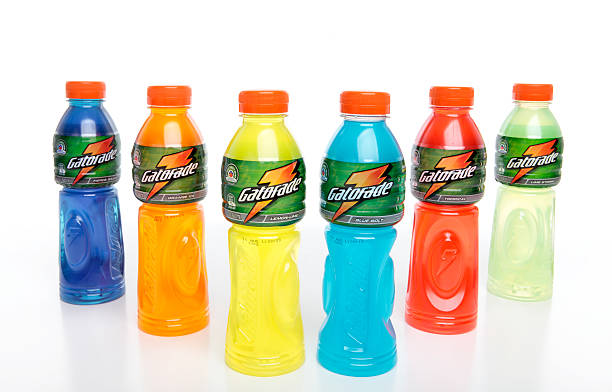What Happens if You Don’t Refrigerate Gatorade After Opening?
Gatorade is one of the most popular sports drinks in the world. With its electrolytes and carbs, Gatorade helps athletes rehydrate and replenish while working out. But like any food or beverage, proper storage is crucial to maintaining Gatorade’s quality and safety. So what happens if you don’t refrigerate Gatorade after opening?
A Quick Intro to Gatorade
Developed in 1965 by researchers at the University of Florida, Gatorade was designed to help the school’s football team – the Gators – stay hydrated and perform better on the field. The researchers discovered that the players were losing electrolytes and fluids through sweat, which led to fatigue and cramping.
Their solution was an electrolyte-carbohydrate drink that could replenish what the players were losing. And thus, Gatorade was born.
Today, Gatorade comes in a wide variety of flavors and formulations but the original intent remains the same. With its calculated blend of electrolytes, carbs, and fluids, Gatorade aims to help athletes perform at their peak.
Proper storage is key to maintaining the quality and benefits of Gatorade. So what can happen if you leave an opened bottle sitting out unrefrigerated? Let’s take a closer look.
Understanding Gatorade’s Ingredients
To understand why refrigeration after opening is recommended, it helps to first look at what’s in Gatorade:
- Electrolytes – This includes sodium, potassium, calcium, and magnesium. Electrolytes help regulate muscle function and hydrate the body.
- Carbohydrates – Gatorade contains sugars like sucrose and dextrose to provide fuel for working muscles.
- Water – The main ingredient, water replenishes what’s lost through sweat.
- Flavors & Colors – Added flavors like lemon-lime and tropical punch make Gatorade palatable. Colors come from dyes.
- Preservatives – Potassium sorbate and sodium benzoate prevent mold and bacterial growth.
This diverse mix of ingredients provides both hydration and energy. But they can be affected if Gatorade isn’t properly stored after opening.
Do You Have To Refrigerate Gatorade After Opening?
Once opened, Gatorade is exposed to air, light, and warmer temperatures which can start impacting its quality in the following ways:
- Bacterial growth – Exposure to air introduces bacteria which can multiply if left unrefrigerated. Mold may also develop.
- Nutrient degradation – The vitamins and electrolytes in Gatorade can start degrading with extended exposure to air and light. Potency diminishes over time.
- Flavor changes – The flavors and aroma can be altered by oxidation and bacterial growth. This leads to an unpleasant taste.
Refrigerating an opened Gatorade bottle helps slow these effects substantially. The cool 37°F temperature inhibits bacterial growth. And by limiting light exposure, the fridge helps retain the drink’s original flavor and nutrients.
So for the best quality and taste, it’s recommended to refrigerate Gatorade after opening. But what exactly can happen if this advice is ignored? Let’s look at some of the consequences next.
What Happens if You Don’t Refrigerate Gatorade After Opening?
Leaving Gatorade unrefrigerated after opening sets into motion several detrimental effects which only intensify over time:
1. Bacterial Growth
One of the most dangerous consequences is bacterial growth. With prolonged exposure to warmer room temperatures, bacteriamultiply exponentially in the Gatorade. Some common offenders include:
- Bacillus cereus – Causes foodborne illnesses like vomiting and diarrhea.
- Escherichia coli – Can lead to severe stomach cramps, nausea, and vomiting.
- Salmonella – Also causes food poisoning with symptoms like fever, diarrhea, and abdominal cramps.
- Listeria monocytogenes – Causes listeriosis which can be fatal in high-risk groups like pregnant women and the elderly.
- Staphylococcus aureus – Produces toxins which can cause severe vomiting and diarrhea.
Consuming Gatorade with uncontrolled bacterial growth puts your health at risk. Make sure to practice safe food handling and refrigerate after opening.
2. Mold Growth
Along with bacteria, leaving opened Gatorade unrefrigerated also allows mold to grow. Although not as dangerous as pathogenic bacteria, mold should still be avoided for health reasons.
Some common molds that can grow in Gatorade include:
- Penicillium – Produces mycotoxins which can cause allergic reactions. Visually appears as blue or green fuzz.
- Aspergillus – Also produces allergy-causing mycotoxins. Looks like dusty green or black powdery spores.
- Fusarium – A mycotoxigenic mold that can produce vomiting and diarrhea if ingested. Has a white, fluffy, or fuzzy appearance.
- Alternaria – Allergenic mold that can cause respiratory issues in those with sensitivities. Colonies look grayish-black.
If you notice mold growing in your Gatorade, discard the drink immediately. While not acutely dangerous for most, it’s best avoided.
3. Nutrient Loss
Gatorade contains beneficial electrolytes like sodium, potassium, and magnesium. But these electrolytes start degrading when exposed to air, light, and warmth for prolonged periods.
Vitamins like vitamin C and vitamin B12 also suffer nutrient loss over time. Studies show vitamins degrade faster at room temperature compared to refrigeration.
This means the electrolytes and vitamins in unrefrigerated Gatorade slowly diminish – reducing its efficacy as a sports drink. Refrigerate after opening to help retain its nutrient content.
4. Loss of Flavor and Texture
Lastly, improper storage leads to unpleasant changes in Gatorade’s taste and texture:
- Oxidation reactions triggered by air exposure can cause flavor fading. The drink loses its tangy, crisp taste.
- Expired Gatorade tends to taste flat or dull. Bubbly carbonation is lost.
- Bacterial contamination leads to foul, vinegary, or curdled flavors.
- Mold growth makes the drink taste musty. Visible mold is stringy and slimy.
- The liquid can become cloudy or discolored rather than clear.
- Grainy deposits from chemical separation may float at the bottom.
- The drink develops a chemical smell instead of crisp, fruity aroma.
To avoid these unpalatable effects, make sure to refrigerate opened Gatorade and consume within several days. Let’s now go over how to spot spoiled Gatorade.
How to Tell If Your Gatorade Has Gone Bad
To determine if your Gatorade has been left unrefrigerated for too long, be on the lookout for these warning signs of spoilage:
- Change in texture – It may appear curdled, slimy, or have foreign particles.
- Cloudy appearance – The liquid looks hazy or opaque instead of clear.
- Change in color – It might look faded, dull, or darkened.
- Mold growth – You may see fuzzy or stringy mold floating on the surface or stuck to the bottle.
- Unpleasant smell – It gives off a sour, vinegary, or chemical-like odor.
- Off tastes – Your first sip will immediately taste ‘off’ – rancid, bitter, or fermented.
If you notice any of these red flags, throw out the Gatorade. Don’t take risks by tasting or drinking it further. Remember that contaminated Gatorade can cause severe vomiting and diarrhea if consumed.
Play It Safe – Drink Gatorade Responsibly
To recap, Gatorade is an iconic sports drink developed to help athletes perform at their best thanks to its blend of carbohydrates and electrolytes. But like any food product, proper storage after opening is crucial.
Leaving Gatorade unrefrigerated allows bacteria and mold to grow which poses health risks. Nutrient degradation also occurs, reducing its efficacy. And the taste and texture profile changes considerably. For best results, make sure to refrigerate Gatorade after opening. Consume within a few days and don’t keep it at room temperature for more than two hours at a time.
With some care and common sense, you can safely enjoy Gatorade whenever you need some hydration and energy. Just be sure to handle it properly after breaking the seal. So check for any signs of spoilage, follow safe consumption practices, and refrigerate your Gatorade after opening!






